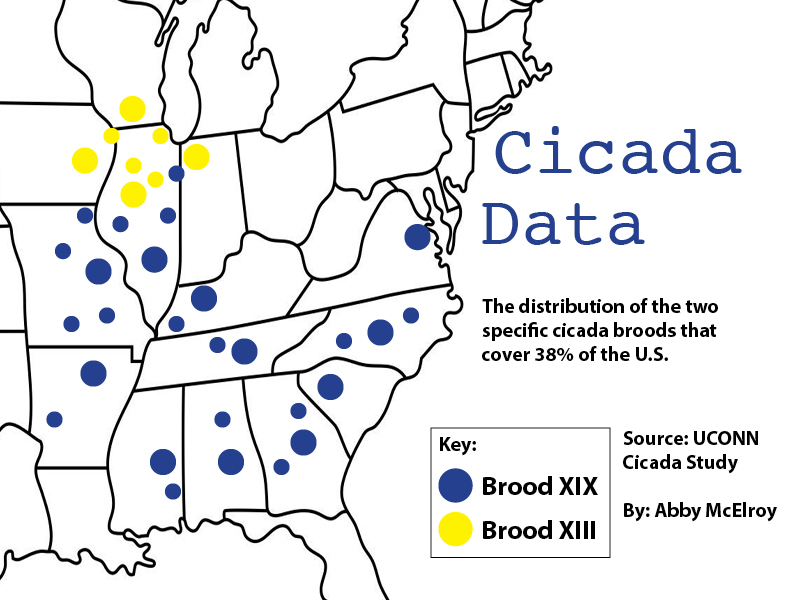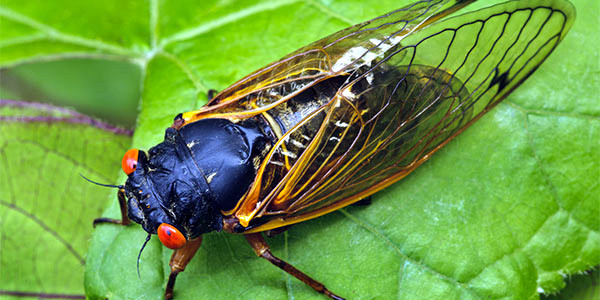By RJ Townsend
They are louder than a motorcycle and even a construction site. They usually come in groups of millions, but that number is in the billions this year. Reaching up to 100 decibels in their broods, these bugs are coming to the Midwest.
This upcoming May, 36% of the United States including Muncie will be impacted by cicadas. These bugs can be one of Earth’s most annoying creatures, not only because they’re loud but because they have a huge population.

The broods that are emerging are Brood XIX (19) and Brood XIII (13). These arrivals have not overlapped since 1803, which was 221 years ago. Scientists define this rarity as a “double emergence.”
”We won’t see this again in our lifetimes,” science teacher Brian Brewer said.
The reason behind this once-in-a-lifetime occasion is that cicadas come above ground periodically. The harmless bugs have short lifespans of a week. They come above ground to mate, then they die.
The amount of time they stay underground depends on the brood type(s). The types that will be arriving this summer are an overlap of the 13-year and 17-year periodical broods.
Questions likely asked about the bugs include: Why do they stay underground for so long? How do they know when to come out?
Plausible reasons are that predators are uncommon and can’t get to them underground. They adapted to hide for most of their lives. They have no defense against other animals besides being the loudest bugs on Earth.
Due to the temperature requirements, cicadas usually surface during the spring in smaller groups. They emerge when the ground temperature at eight inches deep hits 64 degrees. But now those groups are doubled, so what will this larger group do to our spring now?
Cicadas are nothing rare to a midwestern town. That is why sophomore Emma Miller has such strong feelings about them.
“They’re so loud,” Miller said. “I can’t step foot on the farm without feeling the buzz of the heat and those bugs.”
Mr. Brewer clarifies that they are more likely to be in the western and southern parts of the Midwest. And are more likely to be around bodies of water, rivers, lakes and swamps.
“They’re bugs; they migrate, ” Mr. Brewer said. “We should get our usual expected amount, plus a few that move our way.”
As the bugs come in, try to spot them. This will be the last time to see these broods for over a decade.






